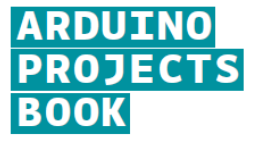05
-
Arduino Programming–II
Love–O-Meter
- Turn the Arduino into a Love Machine. Using an Analog Input, you’re going to register just how hot you really are!
After completing this workshop you will expand the types of inputs you can read, you will use Analog Read() and the serial monitor to track changes inside your Arduino. Now it’s possible to read a large number of Analog sensors and inputs.
Information of this workshop:
Source: 
Section: 03 | Pages 42 - 51 Video: Arduino Tutorial 3
Color Mixing Lamp
- Using a tri-color LED and three photoresistors, you’ll create a lamp that smoothly changes colors depending on external lighting conditions.
This workshop will allow to control over how bright or dim something will be. analogWrite() is the function that allows you to PWM components attached to pins 3, 5, 6, 9, 10, or 11, varying the duty cycle.
Information of this workshop:
Source: 
Section: 04 | Pages 52 - 61
- Turn the Arduino into a Love Machine. Using an Analog Input, you’re going to register just how hot you really are!
-
Arduino Programming–III
Mood Cue
- Use a servo motor to make a mechanical gauge to point out what sort of mood you’re in that day.
After completing this workshop you will acquire the knowledge to control a servo motor by the Arduino using a library, which is a collection of code that extends a programming environment. Sometimes it is necessary to repurpose values by mapping them from one scale to another.
Information of this workshop:
Source: 
Section: 05 | Pages 62 - 69
Light Theremin
- Using a tri-color LED and three photoresistors, you’ll create a lamp that smoothly changes colors depending on external lighting conditions.
This workshop will allow to control over how bright or dim something will be. analogWrite() is the function that allows you to PWM components attached to pins 3, 5, 6, 9, 10, or 11, varying the duty cycle.
Information of this workshop:
Source: 
Section: 06 | Pages 70 - 77 Video: Arduino Tutorial 4
- Use a servo motor to make a mechanical gauge to point out what sort of mood you’re in that day.
-